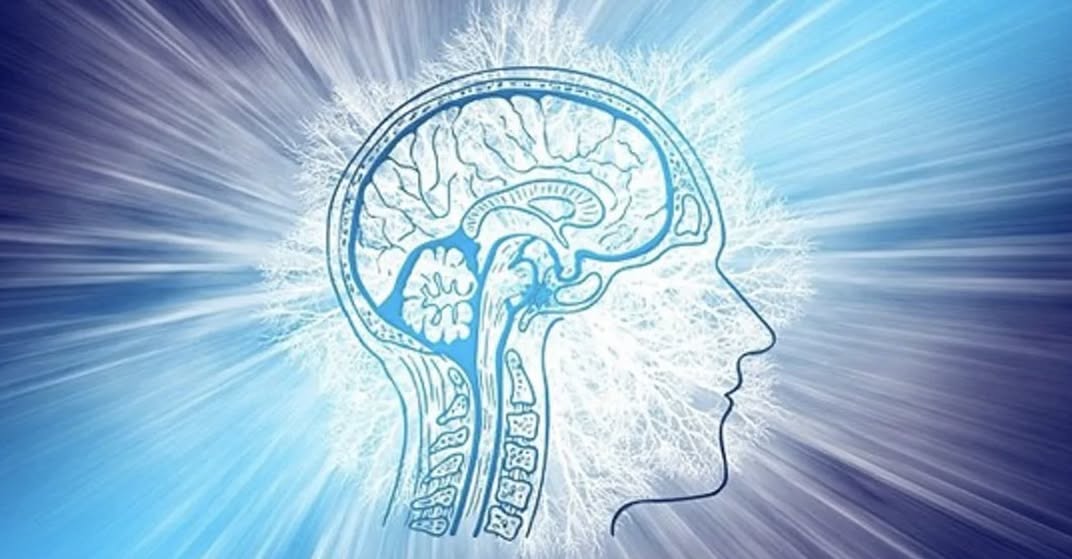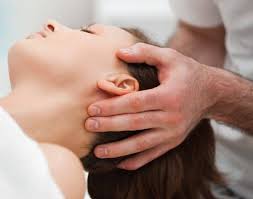
How Much Does Energy Healing Cost in Columbus Ohio

Call For More Information about Energy Healing in Columbus, Ohio
Sharon Hartnett|Energy Healer for over 30 Years
614 653-8111


Sharon Hartnett|Energy Healer for over 30 Years
614 653-8111

Healing Comes from Within and Lives With You. Sometime what we need is a gentle touch and interaction to help us remember the depths and expanse of who we truly are.

Life can pull us in many directions. Stress, loss, or daily demands can leave us feeling disconnected from our natural state of balance. Energy Healing offers a gentle yet powerful way to reconnect with the deeper currents of who you truly are — your core essence of love, clarity, and compassion.
Energy Healing works with the human energy field — the subtle layers that surround and interpenetrate the body. When energy becomes blocked or depleted, it can affect emotional, physical, and spiritual well-being. By restoring flow and coherence, the body and mind return to their natural capacity for healing.
My approach blends Barbara Brennan Healing Science — a four-year, science-based training in hands-on energy healing and personal transformation, 4 years advanced training and teaching — with decades of direct experience and intuition. I’m also trained in Reiki, somatic awareness, and deep energy perception.
From an early age, I noticed the subtle vibrations in nature and the energy that moves between people. This sensitivity led me to the Barbara Brennan School of Healing, where I later became a teacher. There, I witnessed how people could awaken their natural capacity for healing by tuning into the intelligence of the human energy field.
Over the past 30 years, I’ve helped clients understand how their unique “energy bubble” — or field — interacts with others and with the world. When we learn how to sense and balance this field, we begin to release the past, quiet the worries about the future, and feel more centered in the present moment.
My work goes beyond individual sessions. I believe that every person who heals contributes to healthier relationships, communities, and a more compassionate world. As we align with what we truly value and live from our deepest longing and purpose, that resonance naturally ripples outward — creating change that begins within and extends beyond.
Each session begins with a short conversation about what’s happening in your life and what you’d like support with. You’ll then lie fully clothed on a treatment table while I use light touch or work in your energy field. Many clients describe feeling deeply relaxed, peaceful, and more connected to themselves. Over time, they often experience:
Relief from stress and anxiety
Increased emotional clarity
Better sleep and vitality
A stronger sense of purpose and connection
If you’re looking for an experienced energy healer in Columbus, Ohio, I bring decades of practice and a compassionate, grounded presence. My sessions combine hands-on skill, intuitive awareness, and a deep respect for your personal process. Whether you’re seeking physical healing, emotional release, or spiritual growth, this work helps you reconnect with your inner strength and the wisdom already within you.
Healing begins with awareness — a simple pause to notice what’s truly happening inside. If you’re ready to release what no longer serves you and reconnect to the love and light at your core, I invite you to schedule an Energy Healing session in Columbus.
Together, we can restore flow, awaken presence, and help you live from your deepest truth.
To learn about my Craniosacral Therapy services, visit my main page here


Experience
“Have you worked with clients who have chronic migraines or recurring headaches?”
“Do you use pain psychology, cognitive behavioral therapy, biofeedback, or mindfulness-based approaches with people in pain?”
Approach / Modality
“What methods or frameworks do you use (e.g. CBT, ACT, MBSR, somatic work)?”
“How do you integrate the fact that I have a neurological / physical health condition into therapy?”
Coordination of care
“Are you willing to communicate with my neurologist or headache specialist (with my consent)?”
“Have you worked in multidisciplinary teams (doctors, physical therapists, pain clinics)?”
Practicals
Do you accept my insurance (in-network)?
What’s your rate if out-of-network?
Do you offer sliding scale?
Are sessions in person, telehealth, or hybrid?
How often do you typically see clients in similar situations?
Sure mediation can help. But wouldn’t you rather reach for your body’s own ability to deeply heal the core issue? There are no guarantees, however-I have seen many people get much better over a series of Craniosacral Therapy and other manual therapies. Often my clients feel well after a the orignal sessions and then end up coming about once a month to maintain.
If you ahve severe neck issues, it might be best to work with a team of practitioners/doctors.
Sharon Hartnett CST-D
614. 653-8111
To learn about my Craniosacral Therapy services, visit my main page here


Sharon Hartnett CST-D is a Certified Diplomate Craniosacral Therapist through the Upledger Institute
30 years of experience in mind/body centered healing and somatic work.
Telephone: 614 653-8111
Located in Worthington, Ohio and Serving the Columbus area.
Listening to the Body’s Deeper Intelligence
Craniosacral Therapy (CST) is a gentle approach to listening to the body’s own deeper mind-body intelligence. Rather than trying to “fix” a symptom, I listen with my hands and my presence to what your system is already communicating. When the body feels safe enough to express itself, the central nervous system begins to balance, nourish, and restore itself from within.
This work opens communication with the essence and core of each individual. When the craniosacral rhythm is flowing freely, people often feel deeply relaxed, more aligned, and connected to themselves again. Over the years, I’ve seen clients leave sessions feeling lighter, clearer, and more at peace in both body and spirit.
Why I Was Drawn to Craniosacral Therapy
I first experienced craniosacral therapy decades ago. What struck me most was how such light touch could create such profound change. My body softened. My mind quieted. I felt healthier and more whole.
As a practitioner now, I use CST as the foundation of my work because it meets people exactly where they are. The body knows what it needs — my role is to listen deeply, stay neutral, and help the system find its own natural balance.
Many people assume that light touch is less effective than deep tissue work. In reality, working gently with the tissues and dialoguing with the nervous system is often far more powerful for lasting healing. The change arises organically rather than being imposed from the outside.
An Integrative, Trauma-Informed Approach
My practice combines craniosacral therapy, somatic therapy, visceral manipulation, and energy healing in an intuitive, trauma-informed way. Every session is customized to the person in front of me. I draw on what I’ve learned from the Hakomi Method, Barbara Brennan Healing Science, Upledger CST, and years of working with clients through trauma, injury, and personal transformation.
This integrative model allows the body to unwind from multiple levels — structural, emotional, energetic, and spiritual. Healing is never just physical; it’s a whole-person process.
What Happens in a Typical Session
When a client arrives, I begin by listening. The first few minutes are about connecting — hearing what brings them in, noticing their tone of voice, posture, and how they inhabit their body. Everything tells a story about how their system is adapting and compensating.
After about ten minutes, the client lies fully clothed on the table. I place my hands gently at different areas — head, sacrum, feet — and listen to the craniosacral rhythm. This subtle motion naturally goes into flexion and extension with pauses in between. I assess its quality, rate, and symmetry. Where there are restrictions, I support the tissues in finding balance.
Sessions last about 75 minutes, longer than most bodywork sessions, because I want clients to have time to drop into deep stillness without feeling rushed. Afterward, I ask what shifts they noticed and how they might integrate these changes into daily life. Healing continues long after the session ends.
How I Track Progress
Progress often shows up in small but meaningful ways — easier movement, deeper sleep, less anxiety, or feeling more “present” inside the body. Each session, I ask questions to help clients notice what’s changing.
Because the work is so individualized, I often suggest people start with three sessions to feel how their system responds. From there, we adjust frequency based on their goals and progress. Some people come short-term for an acute issue; others choose ongoing sessions for maintenance, stress relief, and emotional regulation.
Somatic Therapy: Bringing Awareness and Empowerment
Somatic therapy helps clients develop awareness of how emotions and experiences live in the body. Using a Hakomi approach, I notice subtle cues — a breath held, a shoulder tightening — and may reflect or ask mindful questions to bring unconscious patterns to light.
Sometimes, we explore these through small “experiments” in awareness. This isn’t talk therapy; it’s an embodied inquiry that helps people discover their own inner wisdom. When someone becomes more self-aware, they naturally become more self-empowered. They begin to trust their body again and make new choices from a grounded place.
Visceral Manipulation: Restoring Internal Balance
Visceral manipulation focuses on the gentle mobilization of the organs and their connective tissues. Every organ in the body needs a certain freedom of motion to function optimally. When there’s restriction — from injury, surgery, posture, or emotional tension — it can affect digestion, breathing, or pelvic health.
I often work with women who experience pelvic discomfort, digestive issues, or breathing limitations. Through subtle assessment and touch, I help release restrictions so the organs can move in harmony again. This work often relieves pain, improves range of motion, and restores vitality throughout the entire system.
A Trauma-Informed Lens
Over the years, I’ve worked with many women who have experienced sexual abuse or boundary violations. Healing touch must always be guided by safety and choice. Sometimes clients say they want touch but their body shows hesitation. In those cases, we pause and explore what safety feels like together before any physical work begins.
Empowerment is at the heart of trauma-informed care. My goal is never to override a client’s readiness but to help them rebuild trust in their own boundaries and sensations. Healing is not about forcing release — it’s about re-establishing connection to the self in a way that feels deeply safe.
Real Stories of Change
Over the years, I’ve witnessed remarkable outcomes — not because of me, but because of how powerfully the body can heal when listened to.
Not every case shifts this quickly — each person’s healing journey unfolds uniquely. But these stories remind me daily of why I do this work.
Physiological and Energetic Perspectives
Physiologically, I believe that every relationship and life experience influences the body. When I come from my higher self — grounded, experienced, and connected — it opens communication down to the cellular and even quantum level. The body begins to reorganize itself toward health.
Energetically, I work with both flow and structure. Sometimes that means clearing congestion in the chakras or balancing the auric field. These subtle levels often correspond directly to physical tension and emotional holding patterns.
Who Can Benefit
Craniosacral therapy can benefit nearly anyone — from babies to seniors. I work with people dealing with:
The only contraindications are conditions like active aneurysms, blood clots, or other medical issues that require more acute care. Otherwise, this work supports overall wellness and prevention by helping the body function at its best.
A Community Approach to Healing
Since moving to the Worthington area, I’ve noticed a need for more connection among bodyworkers and healers. I believe in collaboration and often refer clients to other trusted professionals — physical therapists, massage therapists, chiropractors, and counselors — to make sure they get the most comprehensive support possible.
Putting the client’s needs first means honoring all aspects of their healing. True wellness happens when we see the whole person, not just a symptom.
Why I Do This Work
I do this work because I believe each of us is capable of evolving into the best version of ourselves. My teachers and experiences have shown me that living with core values — curiosity, compassion, and authenticity — brings meaning and purpose to life.
When we learn to listen to the wisdom of the body, life begins to flow differently. Healing is not just about relief from pain; it’s about remembering who we truly are and allowing life to support us fully.
Begin Your Own Healing Journey
If you’re curious about how craniosacral therapy, somatic therapy, or visceral manipulation can help you, I’d love to meet you.
My 75-minute sessions in Worthington, Ohio, offer a peaceful space to unwind, rebalance, and reconnect with your own inner wisdom.
You can reach me on my main page at: craniosacraltherapistcolumbus.com or call 614-653-8111 to schedule an appointment. Together, we’ll explore what your body is ready to release — and what new possibilities it’s ready to open to.


The fascial system forms a continuous integrated architecture that literally connects your feet to your head. Working with this seamless three dimensional connective tissue network beginning at the ankles and feet can make a huge difference in how you feel and move in your body. It also directly affects the neck and it’s ability to sidebend, rotate and move in various directions.
Fascia is a seamless three dimensional connective tissue network that envelopes muscles, bones, organs, nerves and vessels. It allows global integration and force transmission. It is the medium through which all of life dialogues in my opinion.
In any case, recently what I have been noticing is that people who come in with neck issues, usually have a tightness in their lateral line. That begins at the peroneous muscles and goes up through the glutes, transferring possible tension up into the SCM muslces and such. Often this can lead to pain with headaches and migraines. There has to be efficient flow and communication from the head to the body, and the body to the head through the thoracic inlet.
Secondly, the plantar fascia and posterior needs to be considered as it deals with the arch and gait for walking and movement.
We have other lines too from the toes which run up to the pelvis to the head as well. So many relationships with which to work in order to restore better mobility and posture.
The neck may be your weakest link. You may come in with neck pain, and issues like migraines, headaches, and tinnitus. You may believe that you need only local massage to release pain. But this is NOT a local muscle problem.
With Craniosacral Therapy, we approach the whole body. As a Structural integration Therapist I look at the whole body. The reason is- every movemenet we make is about interconnected patterns. What brings about optimal health and motion is addressing all the parts and patterns which add up to the whole.
As a somatic therapist, I know that you want to be feeling your best. I have to say though that most times, working only on the neck won’t bring you long term relief. Everything needs to change to create better order and integration.
Whole body attention is much more comprehensive and effective. You deserve to come in for treatments and to have your goals reached which most often are pain relief and better motibility. It is true that the neck probably needs a lot of attention, but the thoracic inlet, head and everything down to your ankles and toes does need to be included too in most cases.
First of all, my goal is whatever your goal is for yourself. Each Craniosacral Therapy treatment is based on how your body communicates through the craniosacral system. Bodies know how to move into the direction of healing, and I have faith in that dynamic to lead the session. In addition, I visually check your fascial alignment, and feel for twists, turns or any irregularities. I treat based on what you and your body are telling me. Each session is unique, as it should be as each person has their own way of developing and holding posture.
I find that by trusting the body’s communication and presnetation of patterns is the most effective way to treat.
If your neck tightenss is bothering you, lie on the floor and feel how your neck and feet position themselves. Are they even when you look? Flexing your feet and pointing them, are you tight or do you move freely. Can you move your feet from right to left and left to right with ease? When you stand up, can you lift your toes? Do you stand on each side of your heal and the balls of your feet with balance. What do your arches look and feel like? Use your imagination and try to move your feet in many different planes of movement and see what is limited and what is not.
After about 5 minutes of testing. Get back on the floor. Breathe in for 4 and out for 6. Check in with your body and see how it feels after just the test. Do your ankles feel better? Your neck. Make a practice of finding ways to increase your mobility.
With Craniosacral Therapy, the motion tells me everything. On a deeper level, I listen to what the fluids and nervous system show me. I will help the body find alignment, and release tensions. Even more powerful is helping you to center and integrate new changes that give you more freedom in your body.
My message to you is that everything is interconnected in regards to your posture. Your fascia and the Craniosacral System are key to releasing dysfunctional patterns. However long it took you to get into a pain pattern- be patience and take your time to heal, and get well again. You deserve Seslf-Care!
Sharon Hartnett CST-D
614 653-8111
To learn about my Craniosacral Therapy services, visit my main page here

